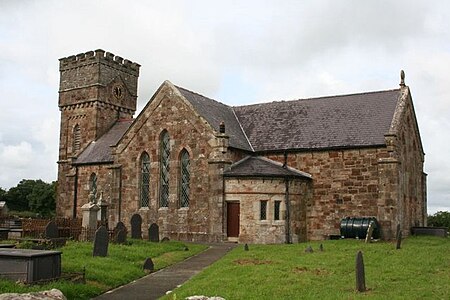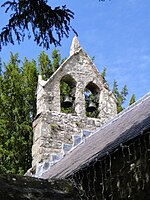St Nidan's Church, Llanidan

St Nidan's Church, Llanidan is a 19th-century parish church near the village of Brynsiencyn, in Anglesey, north Wales. Built between 1839 and 1843, it replaced the Old Church of St Nidan, Llanidan, which needed significant repair, providing a place of Anglican worship nearer to the village than the old church. Some items were moved here from the old church, including the 13th-century font, two bells from the 14th and 15th century, and a reliquary thought to hold the remains of St Nidan. The tower at the west end has been described as "top heavy" and looking like "a water tower".The church is still used for worship by the Church in Wales, one of five in a group of parishes in the south of Anglesey. It is a Grade II listed building, a national designation given to "buildings of special interest, which warrant every effort being made to preserve them", in particular because it is regarded as "a distinctive example of pre-archaeological gothic revival work." The 19th-century clergyman and antiquarian Harry Longueville Jones said that it had been built in a "debased barbarous style, showing neither architectural science nor taste".
Excerpt from the Wikipedia article St Nidan's Church, Llanidan (License: CC BY-SA 3.0, Authors, Images).St Nidan's Church, Llanidan
Geographical coordinates (GPS) Address Nearby Places Show on map
Geographical coordinates (GPS)
| Latitude | Longitude |
|---|---|
| N 53.18218 ° | E -4.262597 ° |
Address
LL61 6TT , Llanidan
Wales, United Kingdom
Open on Google Maps








